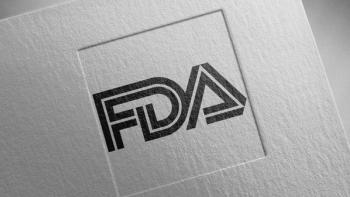
ACE Inhibitors Top Choice for Hypertension in Diabetes
They should be the first-line treatment in patients with hypertension who have DM when cost is not a concern, according to a new study.
As recommended in guidelines, angiotensin-converting enzyme (ACE) inhibitors should be the first-line treatment in patients with hypertension who have diabetes mellitus (DM) when cost is not a concern, according to a new study.
In addition, the authors suggest that calcium channel blockers might be the preferred treatment in combination with ACE inhibitors if adequate blood pressure control cannot be achieved by ACE inhibitors alone.
Among patients with DM, ACE inhibitors fared better than placebo in reducing creatinine doubling, and beta-blockers were associated with an increased risk of death. In addition, ACE inhibitors in combination with other antihypertension medications did not show significant protective effects compared with placebo, but the likelihood of lowering mortality in patients was greater.
Guidelines suggest ACE inhibitors or angiotensin receptor blockers (ARBs) should be the first-line treatment in in patients with hypertension who have DM when cost is not a concern. Clinical trials comparing an ACE inhibitor with an ARB are rare, and the difference in protective effects between these drugs for patients with DM remains inconclusive. No consensus exists about the choice of treatments in combination with renin-angiotensin system blockers in patients with DM, state lead author Hon-Yen Wu and colleagues from National Taiwan University Hospital and College of Medicine, Taipei, Taiwan.
“By combining direct and indirect evidence, our analyses show the renoprotective effects and superiority of ACE inhibitors in patients with diabetes, and also show the harmful effects of beta-blockers,” the authors state. “As the available evidence is not able to show a better protective effect for ARBs compared with ACE inhibitors, our findings support the use of ACE inhibitors as the first-line antihypertensive agent in consideration of cost.”
This systematic review of 63 trials and nearly 37,000 patients assessed the effects of different classes of antihypertension treatments, including monotherapy and combination therapy, on survival and major renal outcomes in patients with DM. Among these patients, there were 2400 deaths, 766 patients who required dialysis, and 1099 patients whose serum creatinine level had doubled.
Compared with placebo, only ACE inhibitors significantly reduced the doubling of serum creatinine levels and only beta-blockers showed a significant difference in mortality, the authors report.
Comparisons among all treatments showed no statistical significance in the outcome of dialysis.
“Although the beneficial effects of ACE inhibitors compared with ARBs did not reach statistical significance, ACE inhibitors consistently showed higher probabilities of being in the superior ranking positions among all 3 outcomes,” the authors state.
Although the protective effect of an ACE inhibitor plus calcium channel blocker compared with placebo was not statistically significant, the treatment ranking identified this combination therapy to have the greatest probability (73.9%) for being the best treatment on reducing mortality, followed by ACE inhibitor plus diuretic (12.5%), ACE inhibitors (2.0%), calcium channel blockers (1.2%), and ARBs (0.4%).
“We found that therapy with ACE inhibitor therapy is the only significantly effective treatment in preventing the doubling of serum creatinine levels compared with placebo. Our analysis also shows the significant inferiority of beta-blockers in all-cause mortality,” the authors state.
The
Newsletter
Enhance your clinical practice with the Patient Care newsletter, offering the latest evidence-based guidelines, diagnostic insights, and treatment strategies for primary care physicians.



















































































































































































































































































